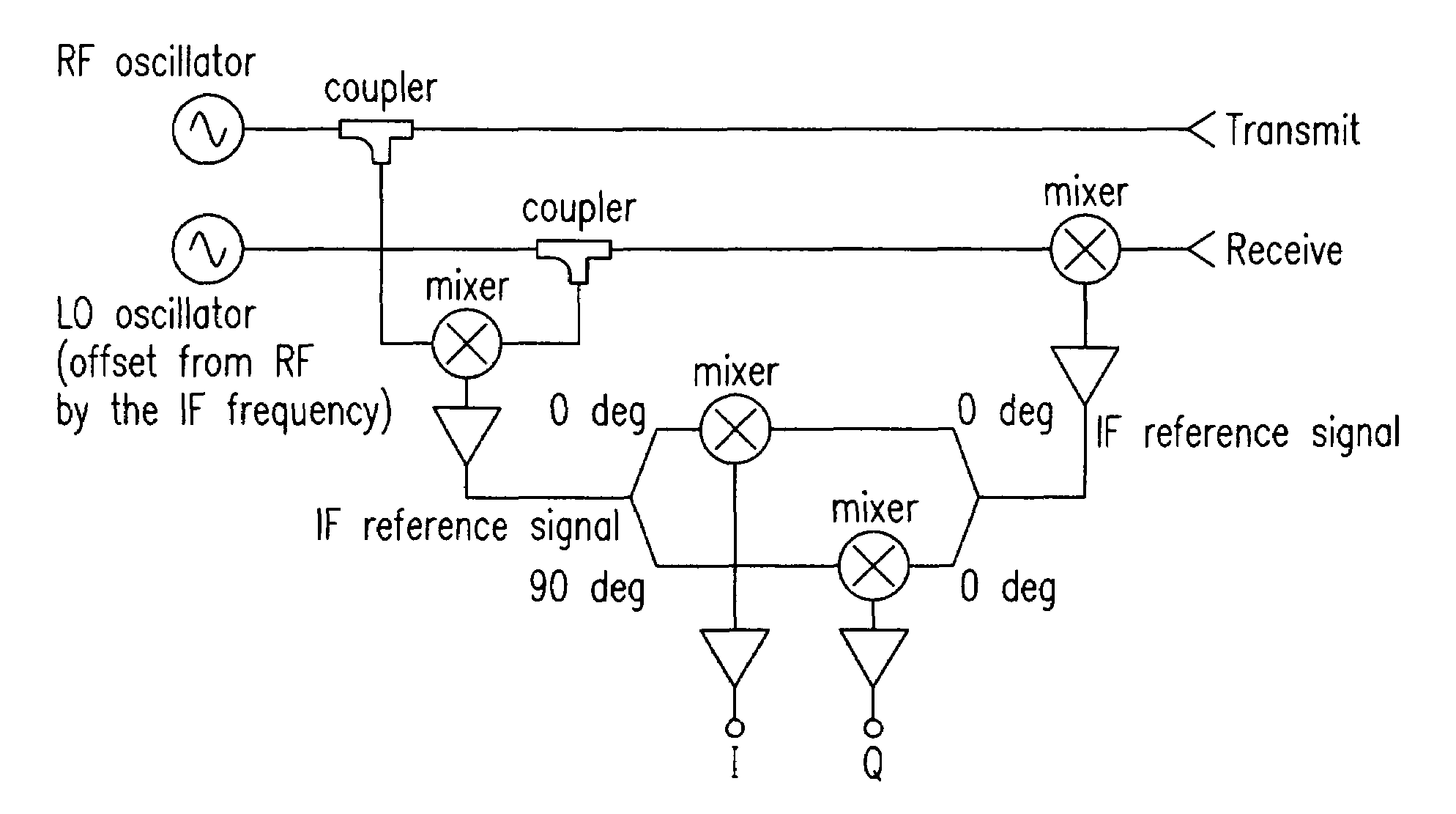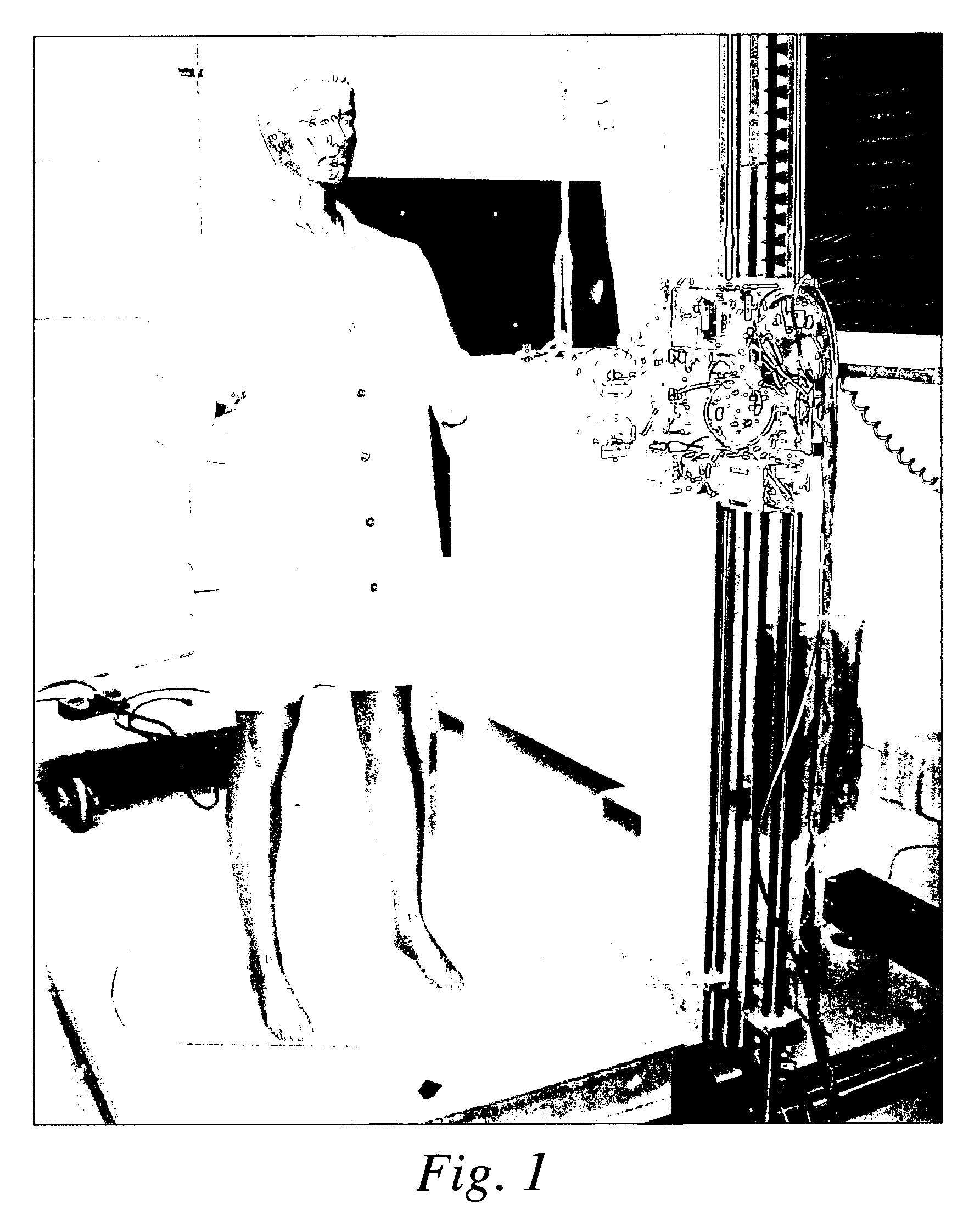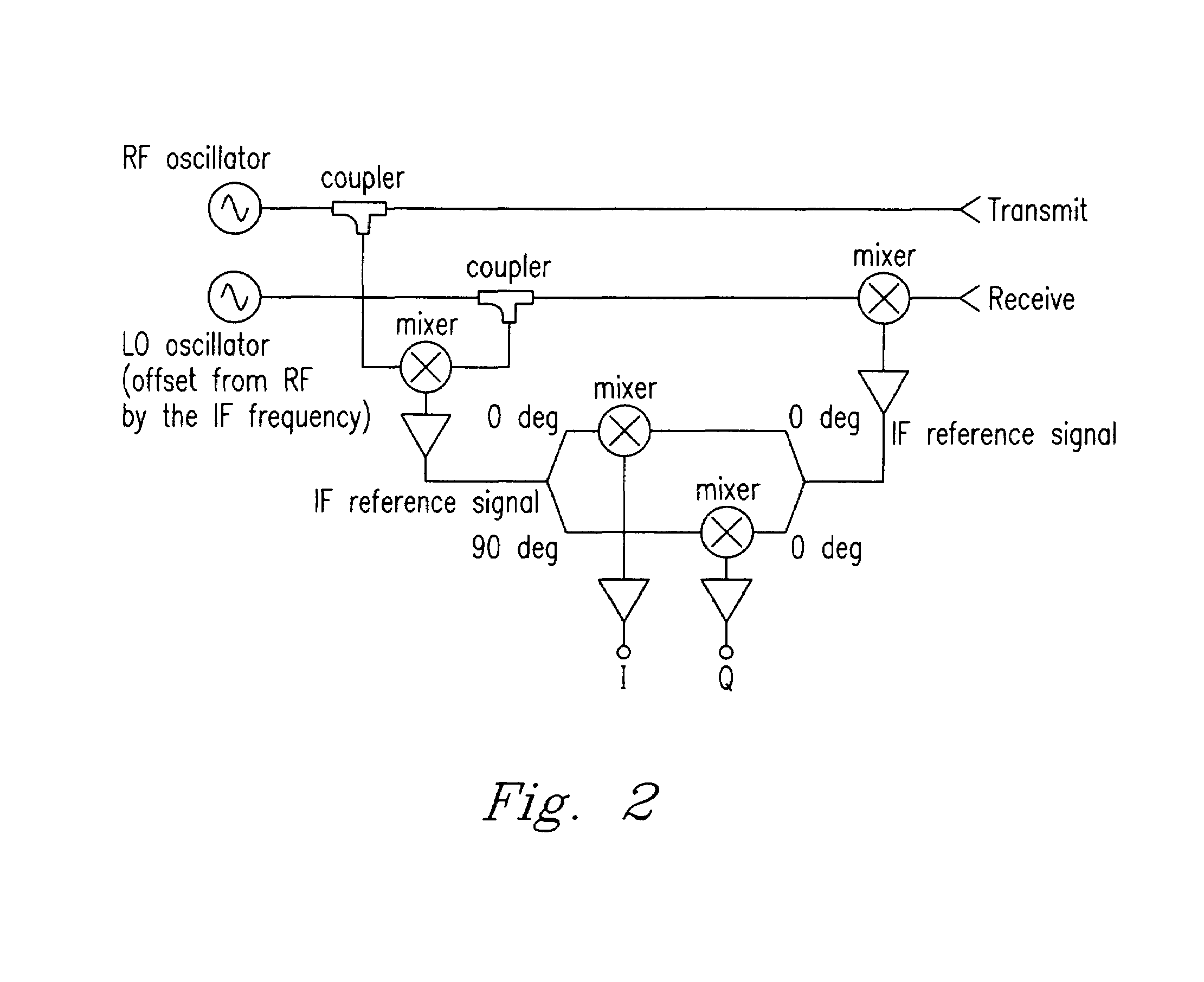Holographic arrays for threat detection and human feature removal
a technology of human feature removal and holographic arrays, which is applied in the field of holographic arrays for threat detection and human feature removal, can solve the problems of not being well-received by the public, affecting the accuracy of holographic arrays, and raising objections to invasion of personal privacy
- Summary
- Abstract
- Description
- Claims
- Application Information
AI Technical Summary
Benefits of technology
Problems solved by technology
Method used
Image
Examples
Embodiment Construction
[0034]An experiment was conducted to demonstrate the ability of the present invention to remove human features from an image of a clothed mannequin. Circular polarimetric imaging was employed to obtain additional information from the target, which was then used to remove those features.
[0035]Circularly polarized waves incident on relatively smooth reflecting targets are typically reversed in their rotational handedness, e.g. left-hand circular polarization (LHCP) is reflected to become right-hand circular polarization (RHCP). An incident wave that is reflected twice (or any even number) of times prior to returning to the transceiver, has its handedness preserved. Sharp features, such as wires and edges, tend to return linear polarization, which can be considered to be a sum of both LHCP and RHCP. These characteristics are exploited by the present invention by allowing differentiation of smooth features, such as the body, and sharper features such as those that might be present in ma...
PUM
 Login to View More
Login to View More Abstract
Description
Claims
Application Information
 Login to View More
Login to View More - R&D
- Intellectual Property
- Life Sciences
- Materials
- Tech Scout
- Unparalleled Data Quality
- Higher Quality Content
- 60% Fewer Hallucinations
Browse by: Latest US Patents, China's latest patents, Technical Efficacy Thesaurus, Application Domain, Technology Topic, Popular Technical Reports.
© 2025 PatSnap. All rights reserved.Legal|Privacy policy|Modern Slavery Act Transparency Statement|Sitemap|About US| Contact US: help@patsnap.com



